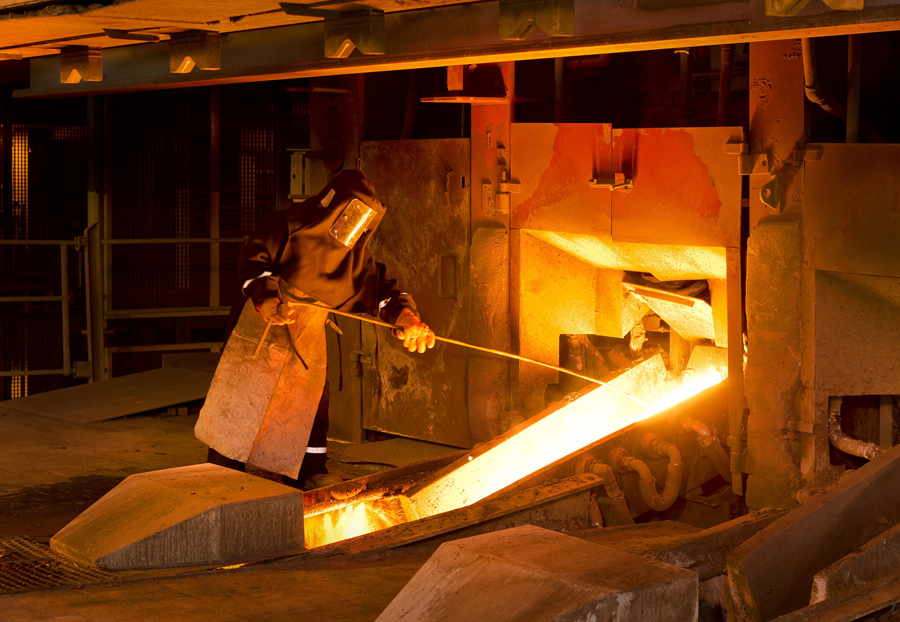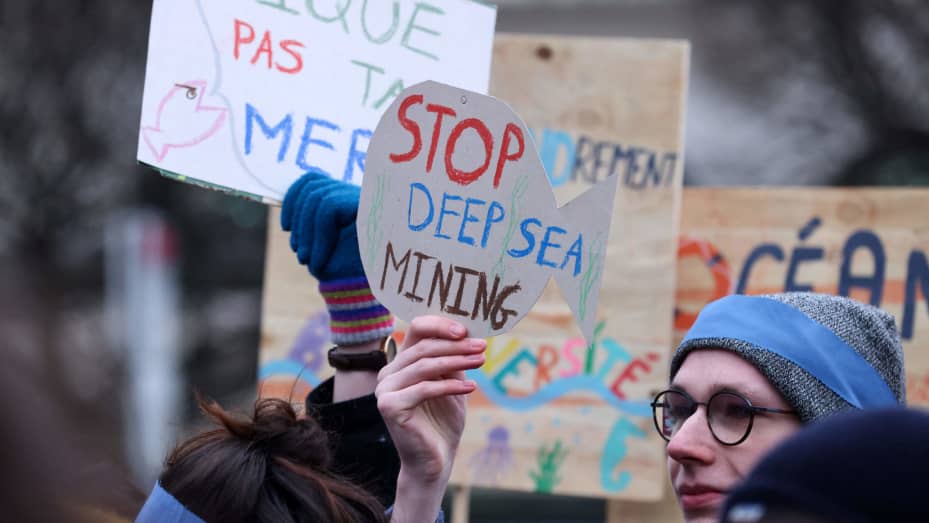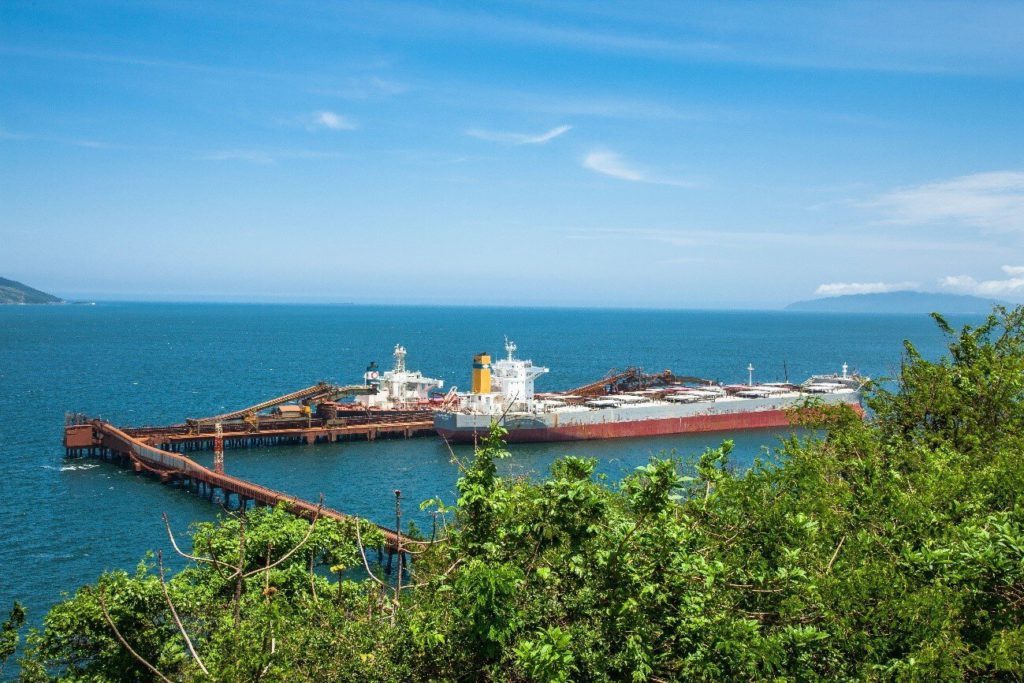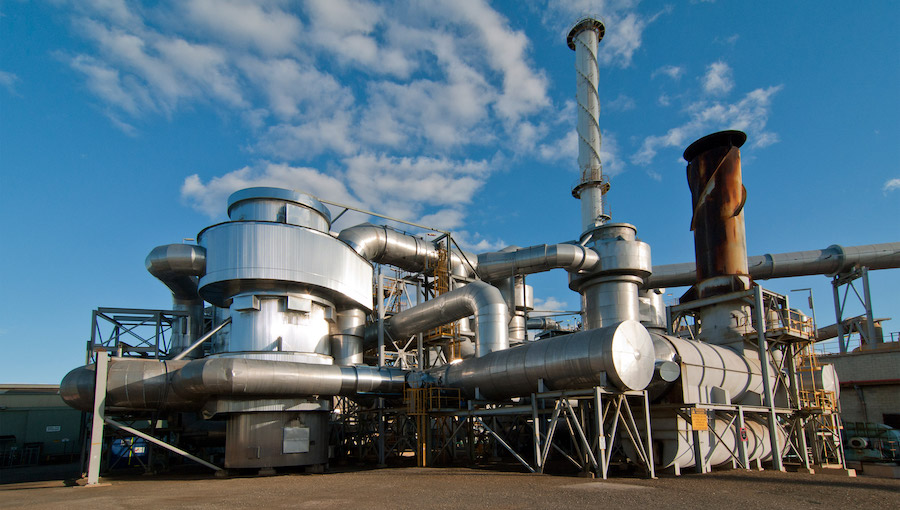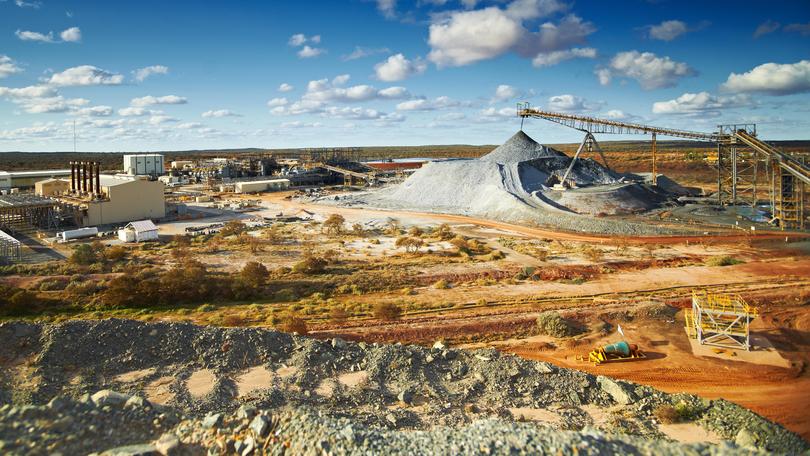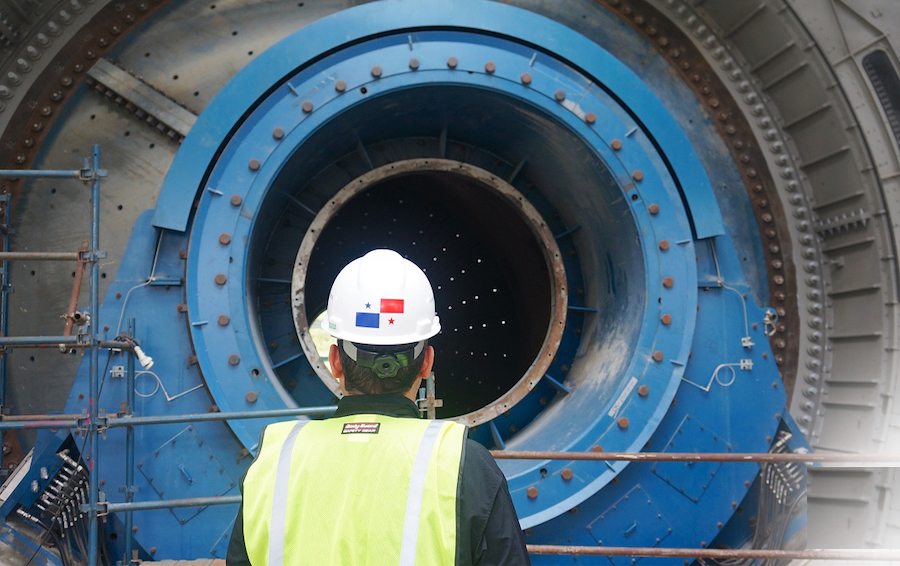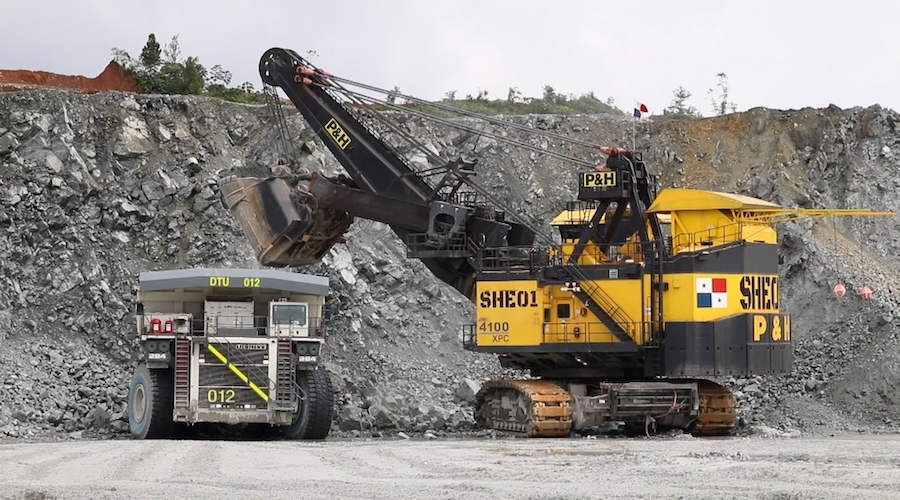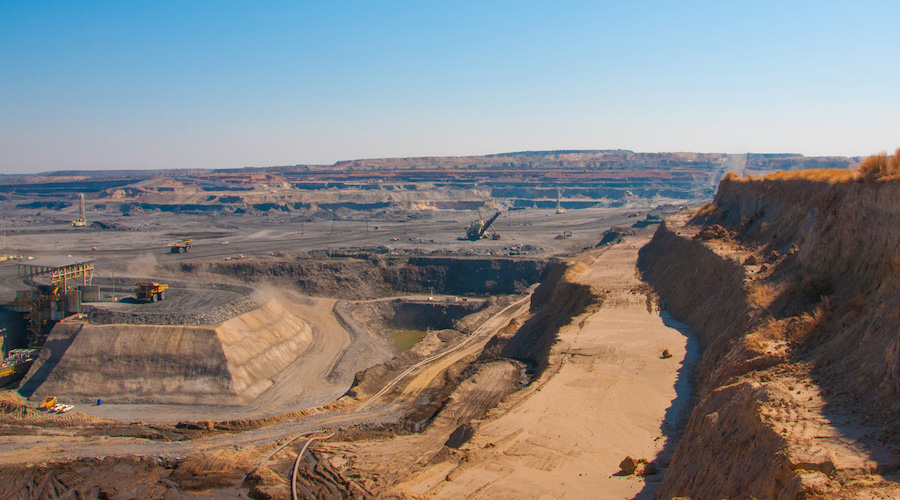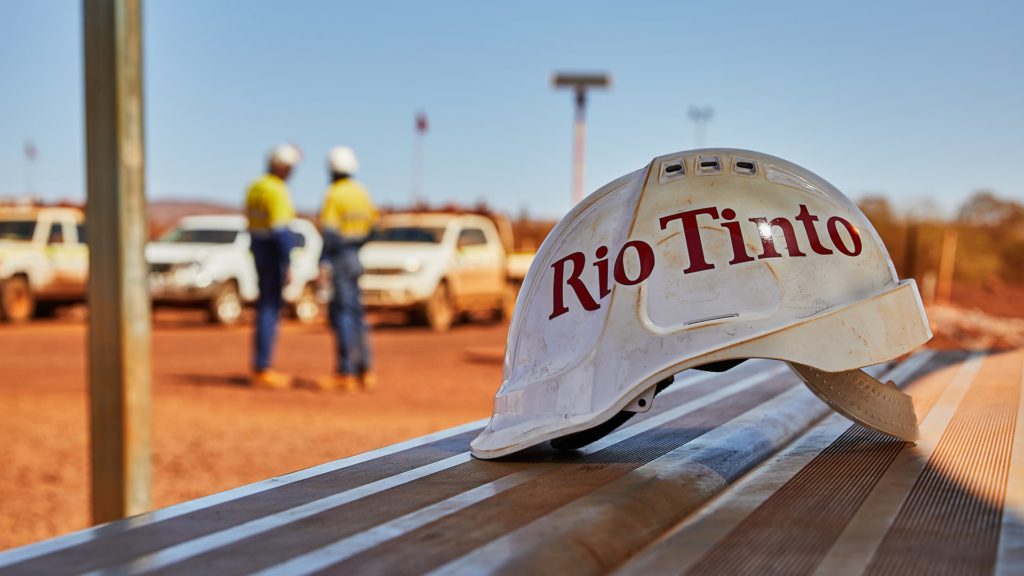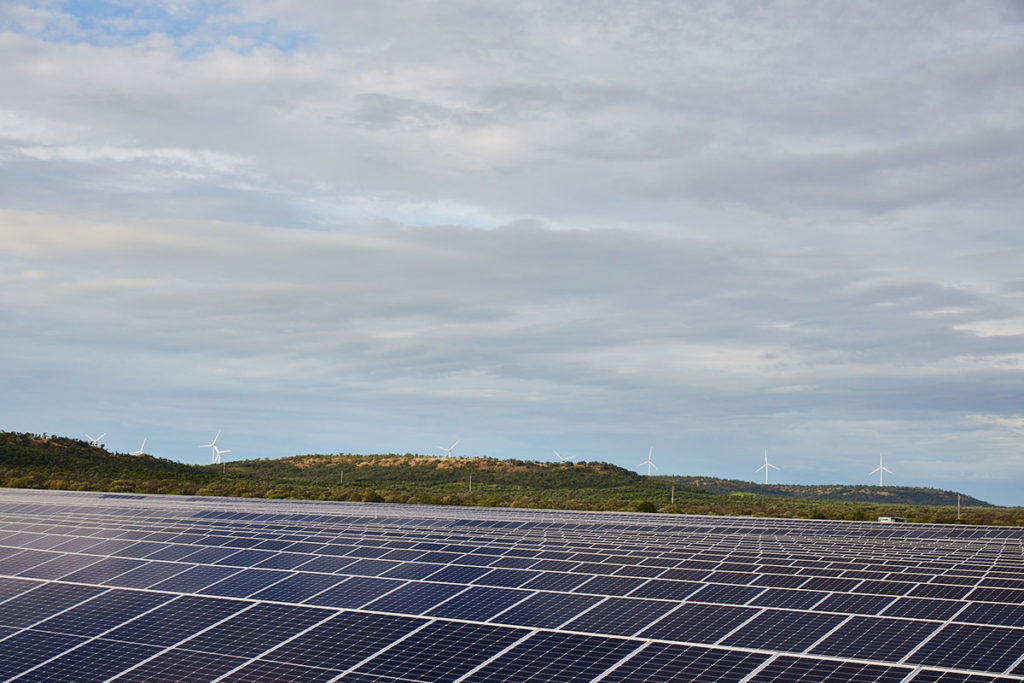Russia, Venezuela discuss cooperation on peaceful use of nuclear
21 February 2024
Russian Foreign Minister Sergei Lavrov said after talks with Venezuelan counterpart Yván Gil that they had discussed expanding bilateral cooperation in a range of areas including energy, medicine, space exploration and agriculture.
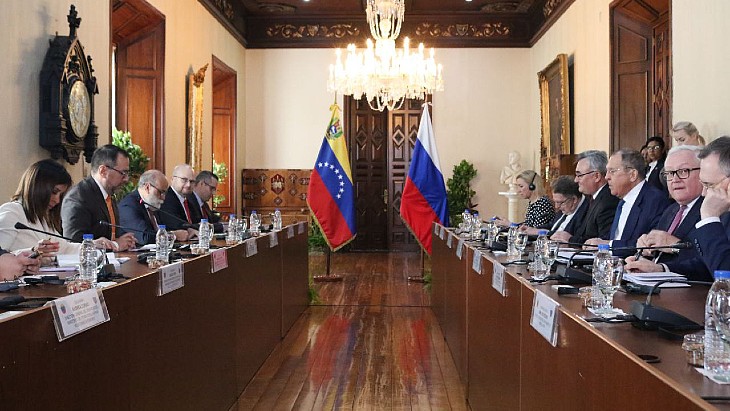 Lavrov, third from right seated, held the talks in Caracas (Image: X/@yvangil)
Lavrov, third from right seated, held the talks in Caracas (Image: X/@yvangil)Lavrov said: "The peaceful use of nuclear energy, which we also discussed, is also promising."
According to a Russian Foreign Ministry transcript of the press conference, Lavrov then added: "We agreed to increase the pace and volume of cooperation in all these areas. We have a common opinion that this work helps to increase the sustainability of our national economies and strengthen the technological sovereignty of Russia and Venezuela. We are ready to share the experience we have accumulated over recent years with our Venezuelan friends."
Gil, in a post on social media platform X, said it was a successful meeting: "We have agreed to further strengthen bilateral relations between our countries, establishing new mechanisms and avenues for cooperation, especially in the tourism, cultural and economic fields."
According the Venezuelan Presidential press service: "Venezuela and Russia are advancing efficiently in the economic-commercial, scientific-technical and humanitarian-cultural areas, prioritising joint projects in energy, infrastructure, agriculture, medicine, education and culture."
Venezuela and Russia have discussed nuclear energy cooperation in the past, with a civil nuclear cooperation agreement signed in October 2010 providing for the construction of two 1200 MWe reactors and a research reactor to produce radioisotopes. Although it appears that the power plant plan was shelved the following year, cooperation in nuclear education continued for Venezuelan students at Russian universities.
Feasibility for AP1000s at Borssele to be studied
21 February 2024
Westinghouse Electric Company has been awarded a contract by the Dutch government to conduct a technical feasibility study (TFS) on the deployment of two AP1000 reactors at the Borssele nuclear power plant site. It comes as the Ministry of Economic Affairs and Climate launches a consultation on the siting of the reactors.
.jpg?ext=.jpg) Michel Heijdra of the Dutch Ministry of Economic Affairs and Climate (left), with Westinghouse's Elias Gedeon (right) (Image: Westinghouse)
Michel Heijdra of the Dutch Ministry of Economic Affairs and Climate (left), with Westinghouse's Elias Gedeon (right) (Image: Westinghouse)Following the award of a contract in December last year to Korea Hydro & Nuclear Power (KHNP) to conduct a feasibility study into the construction of two Korean-supplied reactors at Borssele, Westinghouse will now evaluate the construction of AP1000 units there. The Dutch government has previously said it also intends to award a third such contract to EDF of France. KHNP was due begin its feasibility study in January and it is expected to last at least six months.
The contract with Westinghouse was signed by Michel Heijdra, Director-General for Climate and Energy at the Dutch Ministry of Economic Affairs and Climate, and Elias Gedeon, Westinghouse Senior Vice President of Energy Systems Commercial Operations.
"The TFS represents a significant step forward in the country's ambitious strategy to achieve carbon neutrality by 2050, aligning with the European Union's climate goals and the Dutch commitment to carbon-neutral electricity production by 2035," Westinghouse said.
"We are honoured to begin work with the Dutch government on this preliminary yet crucial phase to deliver the world's most advanced, Generation III+ reactor technology," said Westinghouse Energy Systems President David Durham. "With our industry-leading, globally-deployed AP1000 technology, Westinghouse is proud to support the Dutch government and offer reliable, affordable, carbon-free electricity and economic benefits to the Netherlands for decades to come."
In December 2021, the Netherlands' new coalition government placed nuclear power at the heart of its climate and energy policy. Based on preliminary plans, two new reactors will be completed around 2035 and each will have a capacity of 1000-1650 MWe. The two reactors would provide 9-13% of the Netherlands' electricity production in 2035. The cabinet announced in December 2022 that it currently sees Borssele as the most suitable location for the construction of the new reactors.
Intention and proposal for participation
The Dutch Ministry of Economic Affairs and Climate has also announced that its 'proposal for participation' in the construction of the two new reactors will open on 23 February. Interested parties will have until 4 April to contribute ideas about the research for the construction of the reactors.
"This is the first step of the project procedure to arrive at a final choice of location," the ministry said.
"Companies, social organisations, local authorities and anyone who wants to do so can contribute ideas about the locations to be investigated and environmental effects for the construction of two new nuclear power stations," it said. "If the ideas meet the preconditions described in the intention, the ministry will investigate whether these locations are potentially suitable in the next step of the project procedure. In any case, the existing 'guarantee locations' are being investigated. These are Borssele/Vlissingen (the Sloe area), and Maasvlakte I (the port of Rotterdam)."
The ministry will also soon publish its 'intention' for the new reactors, in which it describes how it will involve interested parties and local residents in the project procedure in the future. Interested parties can indicate in which ways they would like to be involved in the next steps.
"The 'intention and proposal for participation' is a formal part of the project procedure for projects of national importance," the ministry said. "Based on a careful procedure, the cabinet will make a final decision on the location in 2025. The project procedure is one of the four work tracks required to make a final decision and start the tender. The first technical feasibility studies, market consultation and first steps for the National-Regional Package were started earlier."
Hyundai E&C shortlisted to build new Kozloduy units
19 February 2024
South Korea's Hyundai Engineering & Construction is the only one of the five candidates deemed to have met the requirements for the construction and commissioning of two new Westinghouse AP1000 units at Bulgaria's Kozloduy nuclear power plant.
.jpg?ext=.jpg) The existing Kozloduy site (Image: GEN)
The existing Kozloduy site (Image: GEN)
The project company Kozloduy NPP - New Builds Plc, had issued a call for expressions of interest in participating in the procedure for determining a shortlist of potential construction companies for engineering, construction, delivery and commissioning of a nuclear power plant, by 2 February. It says the candidates expressing an interest were Fluor BV, Bechtel Nuclear Power Company Limited, Hyundai Engineering & Construction, a consortium led by China National Nuclear Corporation Overseas and partner China Energy Engineering Group Tianjin Electric Power Construction Co, as well as China Energy Engineering Corporation Limited.
The initial part of the selection process was to check that those expressing an interest met the qualifying criteria. These include demonstrating construction experience and the commissioning of at least two nuclear units as well as "to have solid experience in the nuclear and turbine island of at least two units or have supplied and installed equipment for two units within the last 15 years - applicants must also demonstrate at least USD6 billion in turnover and profit for the five years period from 2018 to 2022". Candidates from the Russian Federation were specifically excluded.
Kozloduy NPP - New Builds said that, after a commission carried out the pre-qualifying review, "the commission proposed for a shortlist of potential construction companies for engineering, construction, procurement and commissioning of a nuclear power plant at the approved site in Kozloduy with AP1000 technology, on the 'pass/fail' principle: Hyundai Engineering & Construction Co". It added that the commission's report had been accepted and approved by the project company.
Hyundai E&C looks set now to go forward to submit an offer in the next stage of the process.
Bulgaria is aiming to have two new Westinghouse AP1000 units at the Kozloduy nuclear power plant. Deputy Energy Minister Nikolay Nikolov told Bulgaria's official BTA news agency in December that the aim was to achieve a price of about EUR6 billion (USD6.5 billion) for each of the units.
Kozloduy units 1-4 were VVER-440 models which the European Commission had classified as non-upgradeable and Bulgaria agreed to close them during negotiations to join the European Union in 2007. Units 5 and 6 feature VVER-1000 reactors that were connected to the grid in 1987 and 1991, respectively. Both units have been through refurbishment and life extension programmes to enable extension of operation from 30 to 60 years.
When the decision to move ahead with AP1000 units at Kozloduy was given approval by the country's council of ministers in October, the target date for the completion of the first unit was 2033, with the second unit to follow "two or three years after the first one". The 2300 MWe capacity of the two new units would exceed the 1760 MWe capacity of the closed first four units. The Bulgarian government has also said that further units will be needed to replace units 5 and 6 by 2050.
Westinghouse will hold overall Design Authority responsibility for the AP1000 plant, the expression of interest document said, adding: "The responsibilities for the design of individual AP1000 plant systems and buildings shall be delegated by Westinghouse. The responsibility for the design of Modules, Constructions Assemblies and Platforms is aligned with the party that is responsible for the design of the building in which the item is located."
Onagawa 2 restart expected in September
20 February 2024
Tohoku Electric Power Company now expects to reconnect unit 2 of its Onagawa nuclear power plant in Japan's northeastern Miyagi Prefecture to the grid in September. In January, the utility said additional safety construction works had delayed the previously planned restart in May.
.jpg?ext=.jpg) Tokohu's Onagawa plant (Image: Kurihalant Co Ltd)
Tokohu's Onagawa plant (Image: Kurihalant Co Ltd)
Tohoku said in January that work to fireproof electric cables at the unit was taking longer than planned and it anticipated a delay of several months regarding the completion date of the safety measures.
"As a result of the completion of a thorough investigation including securing the necessary materials and equipment and workers for the construction work, as well as workability on site, the completion date of the safety measures work at Onagawa Nuclear Power Station Unit 2 has been changed from the previous date of February 2024 to June 2024," Tohoku has now said.
"In addition, the timing of 'restarting', when the generators will be connected in parallel to start generating power, is expected to be around September 2024." It added: "Our company will continue to make every effort to complete the construction work, with safety as our top priority."
Tohoku applied to the Nuclear Regulation Authority (NRA) in December 2013 for a safety assessment of Onagawa 2 - a 796 MWe boiling water reactor (BWR) - to verify countermeasures applied at the plant meet new safety standards. In late November 2019, the NRA approved a draft screening document that concluded the upgraded plant will meet revised safety standards, introduced in January 2013. In February 2020, the NRA approved the final screening report, clearing the way for the unit to resume operation. Tohoku is required to complete the countermeasure upgrades and obtain the approval of local authorities before it will be able to restart Onagawa 2.
The Onagawa plant was the closest nuclear power plant to the epicentre of the earthquake and tsunami of 11 March 2011, but sustained far less damage than expected. The earthquake knocked out four of the plant's five external power lines, but the remaining line provided sufficient power for its three BWRs to be brought to cold shutdown. Onagawa 1 briefly suffered a fire in the non-nuclear turbine building. The plant was largely unaffected by the tsunami as it sits on an elevated embankment more than 14 metres above sea level, but the basement floors of unit 2 were flooded.
GLE laser enrichment on track for 2024 demonstration
20 February 2024
The owners of the Global Laser Enrichment (GLE) joint venture have agreed to double project expenditures in 2024 to accelerate demonstration of the SILEX laser enrichment technology at its Test Loop pilot facility in the USA this year.
.jpg?ext=.jpg) Looking back: the Paducah site was home to a gaseous diffusion enrichment plant that ceased commercial operations in 2013 (Image: Department of Energy)
Looking back: the Paducah site was home to a gaseous diffusion enrichment plant that ceased commercial operations in 2013 (Image: Department of Energy)
Australian company Silex Systems Ltd, which owns 51% of GLE, and Canadian company Cameco, which owns 49%, have approved plans which include an increase in expenditures to up to USD54.5 million in calendar 2024, Silex has announced. In addition to accelerating the technology demonstration project - which GLE anticipates completing this year - this will allow GLE to progress other key commercialisation activities, including site acquisition activities at Paducah, Kentucky, where commercial operations at the planned Paducah Laser Enrichment Facility (PLEF) could begin "as early as 2028", the company said.
"Specifically, GLE's CY2024 plan and budget supports the completion of the technology demonstration project, continued pursuit of government and industry support and funding opportunities, site acquisition activities related to the planned PLEF, preparation of the PLEF NRC license application, completion and commissioning of GLE's new facility in Wilmington, NC, and activities to support manufacturing readiness and supply chain development," Silex CEO Michael Goldsworthy said. "These activities provide the potential for GLE to deploy the SILEX uranium enrichment technology in a timely manner to help address the forecast supply gap in nuclear fuel markets in the coming years."
GLE is the exclusive worldwide licensee of the SILEX laser technology for uranium enrichment. The US Department of Energy agreed in 2016 to sell GLE around 300,000 tonnes of depleted uranium hexafluoride to provide the feedstock for PLEF to produce uranium hexafluoride (UF6) equivalent to natural uranium over three decades, with the output to be sold into the global uranium market. The plant's annual output of up to 5 million pounds of U3O8 (1923 tU) is equivalent to one of today's top-ten uranium mines by production volume, GLE says.
The multipurpose PLEF plant has three commercialisation options: the production of natural grade UF6 (containing 0.7% uranium-235) from the processing of depleted uranium; the production of low enriched uranium (LEU) containing up to 5% U-235 and so-called LEU+ (with U235 assays from 5% to 10%) from natural UF6 to supply enriched uranium fuel for existing reactors; and the production of high assay LEU (HALEU) (up to 20% U-235) to supply fuel for next-generation advanced small modular reactors.
"Subject to the successful completion of the pilot demonstration project, industry and government support, a feasibility assessment for the PLEF and market factors, the SILEX technology could enable GLE to become a major contributor to nuclear fuel production for the world's current and future nuclear reactor fleets," the company said.
The US Department of Energy-owned Paducah site was home to the Paducah Gaseous Diffusion Plant, constructed in 1952 to produce enriched uranium. The plant ceased commercial operations in 2013, and the site is now undergoing a remediation programme. The Department of Energy has been pursuing environmental cleanup goals at the Paducah site since 1988, spending more than USD more than $2.5 billion on cleanup projects since 1990.
Reactor testing of HTGR fuel confirms functionality, Rosatom says
20 February 2024
Samples of the fuel began tests in two research reactors in 2022, with Rosatom reporting they "fundamentally confirmed the functionality of the fuel design" for high-temperature gas-cooled reactors (HTGR).
 (Image: Rosatom)
(Image: Rosatom)
In a report on progress, the Russian nuclear corporation said: "By the end of 2023, in the IVV-2M reactor, one of the batches of laboratory samples of microfuel elements developed and manufactured by JSC VNIINM (part of TVEL), and fuel compacts developed and manufactured by JSC NII NPO Luch (part of Rosatom's scientific division), achieved burnup of 11-12% of heavy atoms. This practically corresponds to the design burnup values for HTGR fuel."
The temperature of the HTGR fuel was maintained between 1000-1200 °C during the process. The results of the experiments are being taken into account in developing an HTGR design and also in developing a pilot production process for HTGR fuel.
It said: "Based on the totality of accumulated experimental data (including those obtained online throughout the entire reactor experiment), Rosatom specialists have fundamentally confirmed the functionality of the developed HTGR fuel design (TRI-structural ISOtropic particle fuel, TRISO fuel)."
It added that "in the work programme for 2024-2025 it is planned to carry out at the experimental sites of the Rosatom scientific division a complex of post-reactor studies of irradiated samples of HTGR fuel, as well as reactor experiments in the limiting and emergency modes of its operation".
The HTGR project is aimed at a future nuclear power plant "as part of an investment project to create domestic technologies for large-scale production and consumption of hydrogen and hydrogen-containing products".
According to the World Nuclear Association's information paper, HTGR fuel "is in the form of TRISO particles less than a millimetre in diameter. Each has a kernel of uranium oxycarbide, with the uranium enriched up to 17% U-235. This is surrounded by layers of carbon and silicon carbide, giving a containment for fission products which is stable to 1600°C or more. These particles may be arranged: in blocks as hexagonal 'prisms' of graphite, or in billiard ball-sized pebbles of graphite encased in silicon carbide".
Work begins on new Iranian research reactor
19 February 2024
Concrete pouring for a 10 MW research reactor has begun at Isfahan, the Atomic Energy Organisation of Iran (AEOI) has announced. The organisation has also declared operational a new emergency control room simulator for unit 1 at the Bushehr nuclear power plant.
.jpg?ext=.jpg) Concrete pouring operations under way at the Isfahan site (Image: AEOI)
Concrete pouring operations under way at the Isfahan site (Image: AEOI)
"The concrete placing operation of the main structure of the 10MW research reactor was started with the presence of Mr Eslami, the head of the AEOI, in the Isfahan nuclear site," the AEOI said. "The research reactor is a pool-type multi-purpose research reactor and will be built for various uses and purposes in the fields of industry and health."
According to an AEOI announcement on 5 February, the research reactor will use fuel enriched to 20% uranium-235 and is designed to produce a high-flux source of neutrons. Its main uses will be for the testing of fuel and nuclear materials, production of industrial radioisotopes and radiopharmaceuticals, and development of neutron beam lines for various uses such as radiography, diffraction, material analysis, production of silicon semiconductors and cold neutron sources, and education and research.
Bushehr simulator operational
In a separate announcement, the AEOI said the emergency control room (ECR) simulator at Bushehr 1 is now operational, and is scheduled for full training use within the next few months.
.jpg)
Bushehr 1's new emergency control room simulator (Image: AEOI)
The ECR is used by plant operators should the main control room (MCR) of the plant, a Russian-designed VVER-1000 pressurised water reactor, become unavailable. The ECR "is intended for activating the safety systems, bringing the reactor to sub-critical state and maintaining it for an unlimited period of time, removal of residual heat from the reactor, and monitoring important reactor parameters in case of MCR failure", the AEOI said.
All the components of the ECR simulator as well as the software needed to connect it to the plant's full scope simulator have been developed domestically, AEOI head Mohammad Eslami said.
.jpg)
Bushehr 1 (Image: AEOI)
British company pioneers new nuclear welding technique
19 February 2024
Sheffield Forgemasters has completed weld-assembly of a full-sized small modular reactor (SMR) nuclear vessel demonstrator assembly using Local Electron-Beam Welding (LEBW). It said the technique took less than 24 hours to complete four, thick, nuclear-grade welds, typically requiring a year of work to complete.
.jpg?ext=.jpg) The ground-breaking welded SMR vessel (Image: Sheffield Forgemasters)
The ground-breaking welded SMR vessel (Image: Sheffield Forgemasters)
"With a diameter of three metres and a wall thickness of 200mm, construction of the vessel showcases the reliability and capabilities of LEBW, setting a dramatic new standard for weld-joining thick-walled components, previously untrialled in a demonstrator model," the company said.
Sheffield Forgemasters deployed specially developed parameters, meticulously fine-tuned during the welding development stage, including innovative sloping-in and sloping-out techniques to start and finish the weld, ensuring a clean and complete weld-join.
"We are delighted to have reached a significant milestone in assembling a nuclear vessel demonstrator, using electron beam welding for the first time at this scale, with 100% success and no defects," said Jesus Talamantes-Silva, research, design and technology director at Sheffield Forgemasters.
Michael Blackmore, senior development engineer and project lead, added: "The implication of this technology within the nuclear industry is monumental, potentially taking high-cost welding processes out of the equation.
"Not only does this reduce the need for weld-inspections, because the weld-join replicates the parent material, but it could also dramatically speed up the roll-out of SMR reactors across the UK and beyond, that's how disruptive the LEBW breakthrough is."
Sheffield Forgemasters - the only company in the UK with the capability to manufacture the large forgings required for SMRs - said the demonstration of LEBW technology's potential opens new horizons for "more efficient, low-cost and less time-heavy nuclear assemblies" and also has far-reaching implications for other projects which require thick-walled welded assemblies.
"We thank the government's Department for Energy Security and Net Zero for enabling the project through its Nuclear Innovation Programme," said Jacob Pope, development engineer and LEBW machine tool installation lead. "We also thank our esteemed partner, Cambridge Vacuum Engineering, for their invaluable support throughout this endeavour. Their remote and on-site assistance played an instrumental role in the success of this milestone, highlighting the collaborative spirit that drives us forward."
"Future company activities include an upcoming joint industrial project supported by key participants from the USA and UK," Sheffield Forgemasters said. "The objective is to initiate a code case or multiple cases to facilitate the deployment of this technology in accordance with the standards set by the American Society of Mechanical Engineers (ASME)."
In December, Sheffield Forgemasters said it was on track to regain ASME status as a supplier of heavy forgings and castings to the civil nuclear market, to position it for the proposed large-scale expansion of nuclear capacity in the country.
The company, which was acquired by the UK's Ministry of Defence in 2021, says an ASME Section III Division I NCA 3300, NCA 4000 and NQA-1 Code survey and audit, recommended it for Material Organisation (MO), and welding (NPT) accreditations. ASME MO and NPT status means it can supply castings and forgings (material) for civil nuclear applications and also be qualified to carry out weld construction activities on these materials.
Researched and written by World Nuclear News
